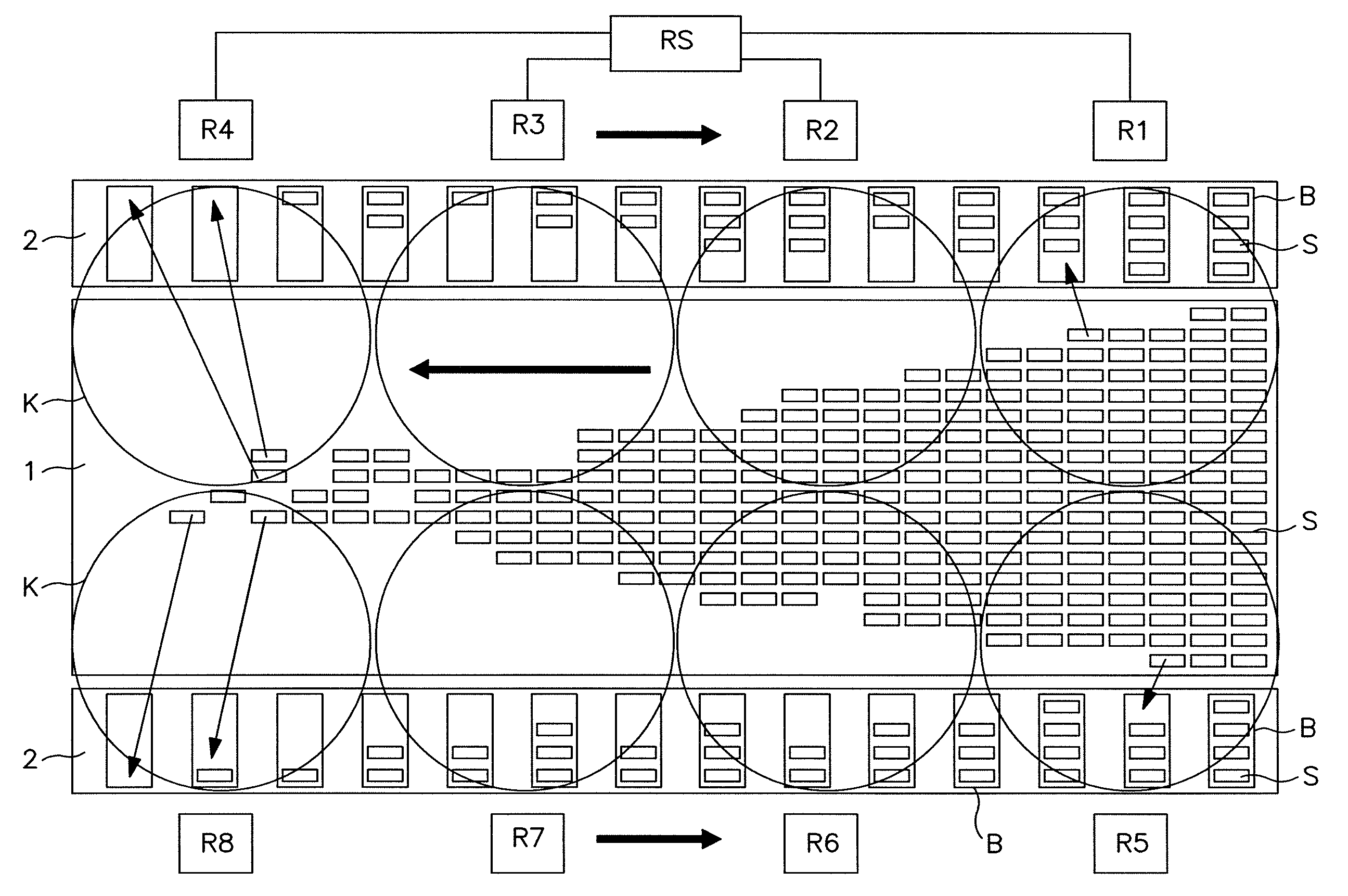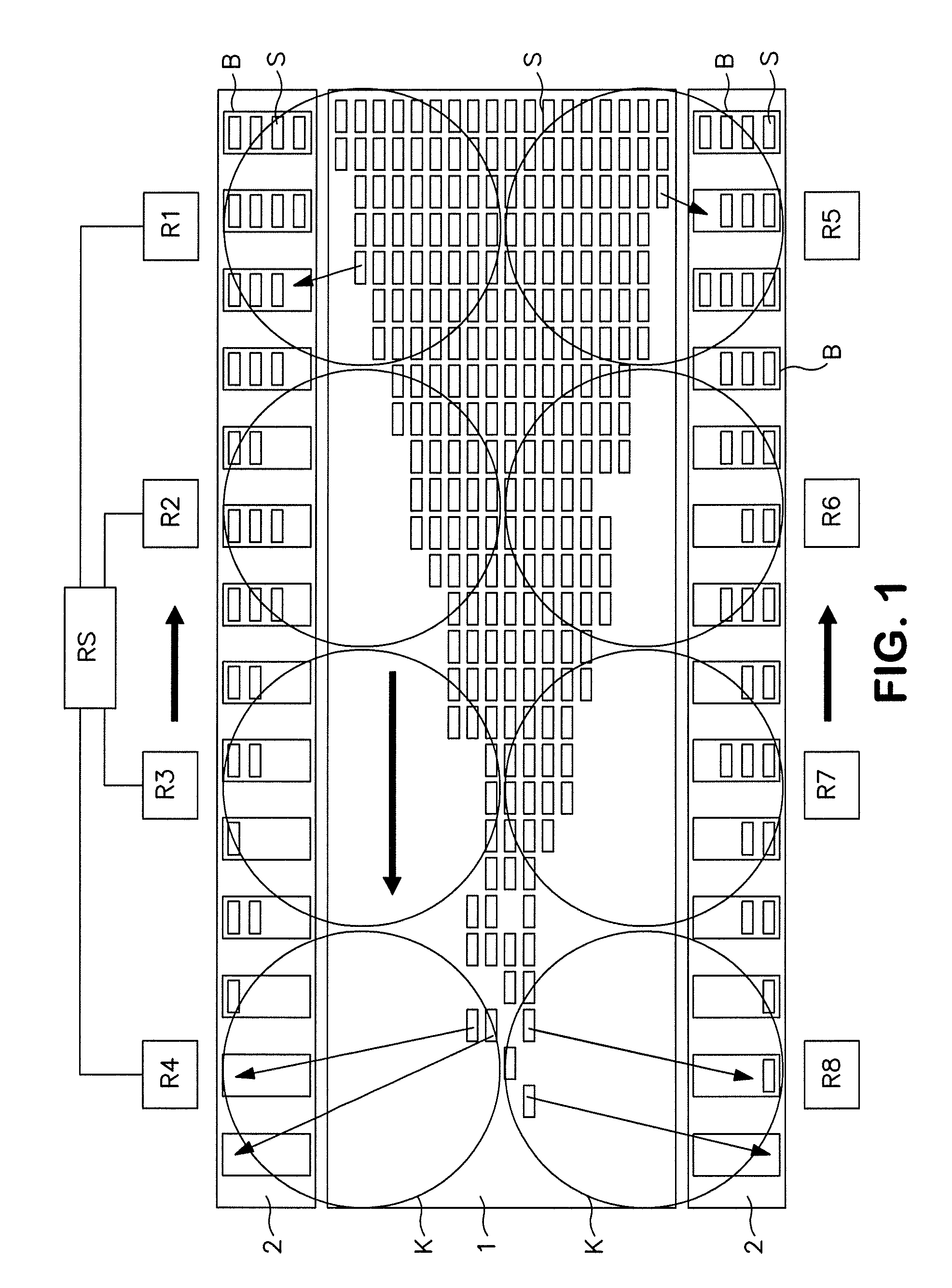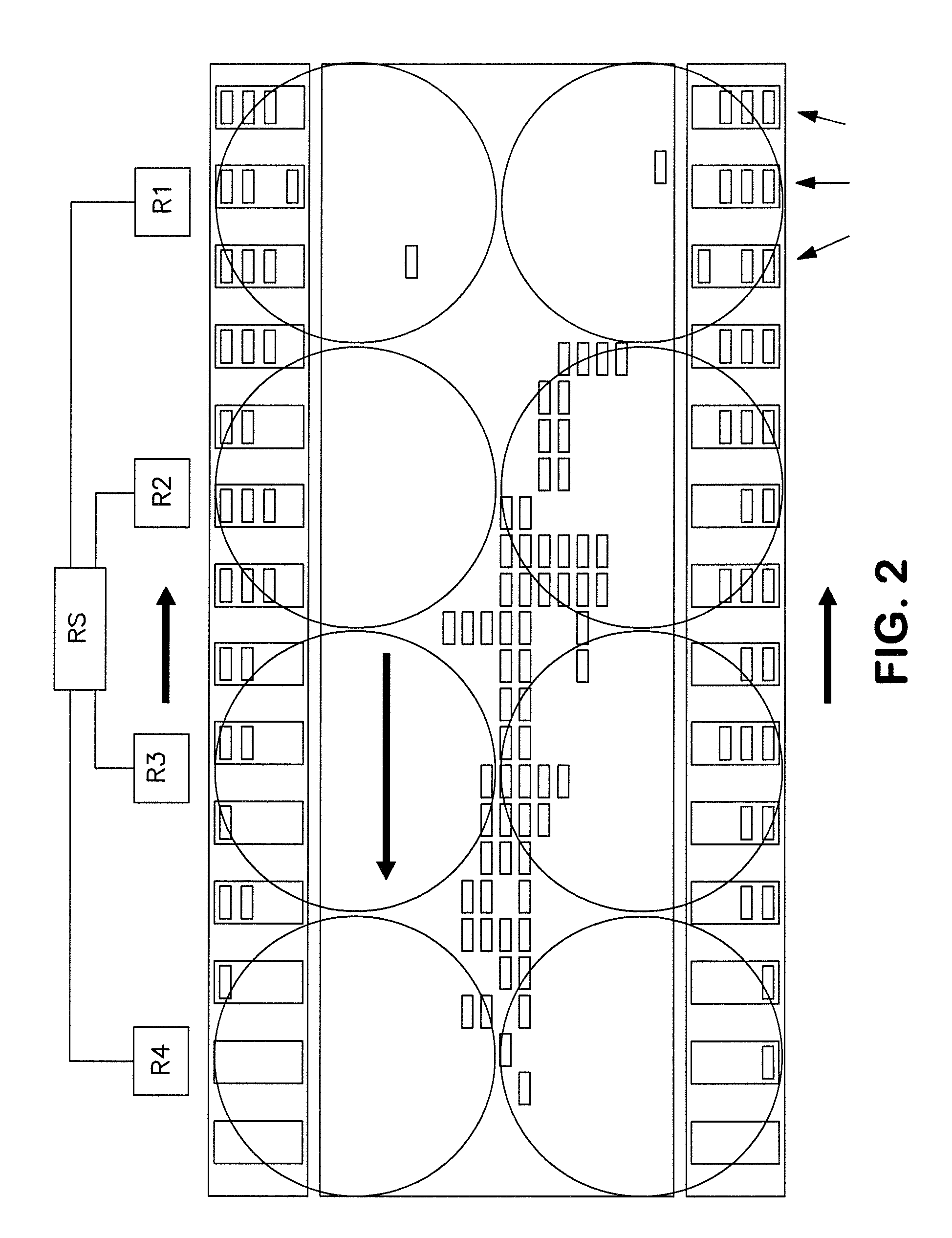Method for filling containers with piece goods
a technology for filling containers and piece goods, applied in the direction of packaged goods, instruments, program control, etc., can solve the problems of unable to meet the normal operation of the system, and not being able to fill these partially filled containers
- Summary
- Abstract
- Description
- Claims
- Application Information
AI Technical Summary
Benefits of technology
Problems solved by technology
Method used
Image
Examples
Embodiment Construction
[0025]FIG. 1 schematically depicts a packaging system of a known type. It has one or more conveyors 1, 2 for containers B and piece goods S, sections of which preferably extend parallel to one another and in a horizontal plane, at least in some sections.
[0026]In the case of the piece goods or individual products, the conveyors 1, 2 are preferably endlessly revolving conveyor belts or in the case of the containers, the conveyors 1, 2 are endlessly revolving driver chains. It is, however, also possible to use other known conveyor types. In the example shown here, one horizontally extending piece goods conveyor 1 and two horizontally extending container conveyors 2 are provided. The container conveyors 2 are situated on both sides of the piece goods conveyor 1 and preferably extend in the same plane as the piece goods conveyor 1. The transport or conveying directions of the individual conveyors 1, 2 are indicated by large black arrows. In this example, the system functions in accordanc...
PUM
| Property | Measurement | Unit |
|---|---|---|
| speed | aaaaa | aaaaa |
| length | aaaaa | aaaaa |
| power | aaaaa | aaaaa |
Abstract
Description
Claims
Application Information
 Login to View More
Login to View More - R&D
- Intellectual Property
- Life Sciences
- Materials
- Tech Scout
- Unparalleled Data Quality
- Higher Quality Content
- 60% Fewer Hallucinations
Browse by: Latest US Patents, China's latest patents, Technical Efficacy Thesaurus, Application Domain, Technology Topic, Popular Technical Reports.
© 2025 PatSnap. All rights reserved.Legal|Privacy policy|Modern Slavery Act Transparency Statement|Sitemap|About US| Contact US: help@patsnap.com



